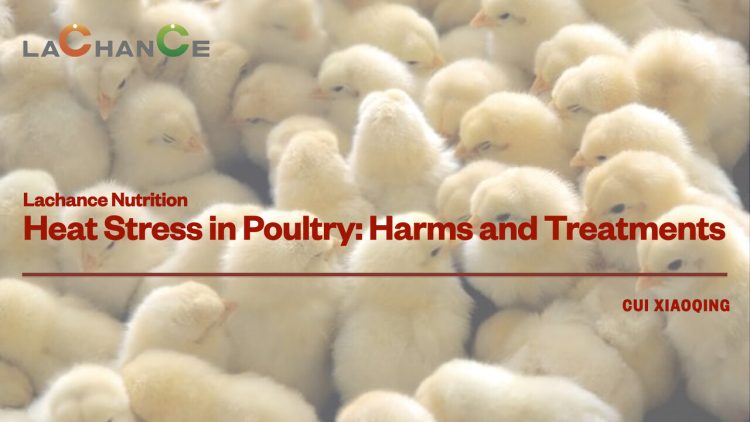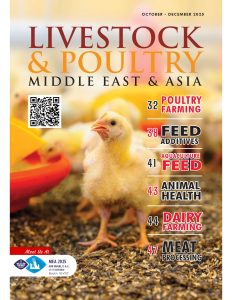Heat stress has a serious impact on livestock development, causing billions of dollars in losses to the global livestock industry every year. In summer, it is easy to cause heat stress in areas with long high temperatures, which affects the normal growth and development of poultry. So what are the dangers of heat stress?
1. Heat stress causes energy metabolism disorders in poultry The influence of heat stress on poultry is multifaceted, and its main manifestations are as follows:
(1) After heat stress, the metabolism of poultry is disturbed and the energy supply is insufficient;
(2) After heat stress, the blood glucose content increases, the lactic acid content increases;
(3) After heat stress, poultry kidneys, heart and liver produce a large number of free radicals, resulting in their function impaired;
(4) After heat stress, poultry metabolism is abnormal and energy distribution in the body is unbalanced. Under normal circumstances, the body provides energy through skeletal muscle, fat and kidneys. Skeletal muscle and fat are the main functional organs of poultry. When the ambient temperature exceeds 37°C, the amount of glucose in the blood of poultry increases significantly When the ambient temperature is higher than 38℃, the lactic acid content in the blood of poultry increases. The production of a large number of free radicals can cause oxidative damage in poultry and affect its normal metabolic function.
2. Heat stress adversely affects the poultry liver
Heat stress can increase lipid peroxidation in poultry liver, and then lead to liver cell damage. Under heat stress, insufficient energy supply or metabolic disorders in poultry affect the liver’s ability to synthesize proteins and cause fat to accumulate in liver cells. Therefore, heat shock will reduce the utilization rate of protein and the absorption capacity of nutrients.
3. Heat stress affects the respiratory function of poultry
Heat stress can cause respiratory mucosal inflammation in poultry, which leads to the weakening of mucociliary movement in the inhalation tract and can not effectively clear respiratory secretions.
4. Heat stress can decrease feed intake and affect the production performance of poultry
The feed intake and feed conversion rate of chickens decreased significantly under high-temperature conditions. At the same time, it can also lead to weight loss and lower growth rates of chickens. During the heat stress of broilers, the change of body weight is inversely proportional to the age of broilers, and the greater the age of broilers, the more obvious the weight loss. Since chickens are endotherms, when the ambient temperature reaches or exceeds 35°C, there will be reduced feed intake and slower growth. Studies have shown that the growth rate of chickens under heat stress is not decreased significantly, but the body weight is significantly lower than that under normal conditions. Studies have also shown that when the ambient temperature exceeds 35°C, the feed intake of chickens decreases significantly. In conclusion, the feed intake of chickens under heat-stress conditions will change under the influence of environmental temperature and age. In the summer of high temperature and humidity, the feed intake of poultry decreases seriously. Therefore, under the conditions of high temperature and high humidity, cooling measures should be taken to reduce the ambient temperature and reduce the loss of feed water evaporation to reduce the impact of heat stress on poultry performance.
If heat stress occurs, what can be done to reduce the harm caused by heat stress to poultry?
1. First, reduce the temperature of the coop.
Reducing the temperature in the chicken house is an important measure to deal with heat stress. Through the installation of cooling facilities, such as fans, water curtains, etc., to strengthen ventilation, can effectively reduce the temperature in the chicken house; Secondly, to increase the humidity of the chicken house. Increasing the humidity in the chicken house can reduce the air temperature, and increasing the relative humidity of the air in the chicken house is an important measure to effectively cope with heat stress. Taking ventilation measures can reduce the oxygen content in the air, increase the carbon dioxide concentration, and reduce the temperature in the house.
2. Adjust feed formulation
The occurrence of heat stress will lead to a decrease of feed intake of poultry and slow down the growth rate, which will affect the feed utilization rate and reduce the production performance. Under heat stress conditions, the feed utilization rate and growth rate should be improved by adjusting the feed formula. Under heat stress conditions, the energy and protein requirements of poultry increase, and the energy and protein content of the diet can be appropriately increased.
3. Add anti-heat stress additives
The occurrence of heat stress is related to the energy level in feed, and the lack of energy will lead to vigorous metabolism and increased heat production. Therefore, when heat stress occurs, adding bile acids to the diet can improve the egg production rate and egg weight of animals, and reduce the death caused by heat stress. Bile acids have two main functions: improve fat utilization rate by 15%-20%; and protect liver health. Under the condition of heat stress, the activities of superoxide dismutase (SOD) and glutathione peroxidase (GSH-Px) in the body decrease, and the ability of cells to remove free radicals decreases, resulting in oxidative damage of the body. Exogenous addition of bile acids can increase the GSH level in the liver of animals, enhance the body’s ability to resist heat stress and reduce oxidative damage. Therefore, adding 200g/t bile acids to poultry diets can effectively prevent the occurrence of heat stress and reduce economic losses. If heat stress has occurred, then increase the amount of bile acid added to 350g/t, combined with baking soda (2%) and vitamin C (100g/t), so that after 2-3 weeks of use, heat stress will be significantly improved.2


















